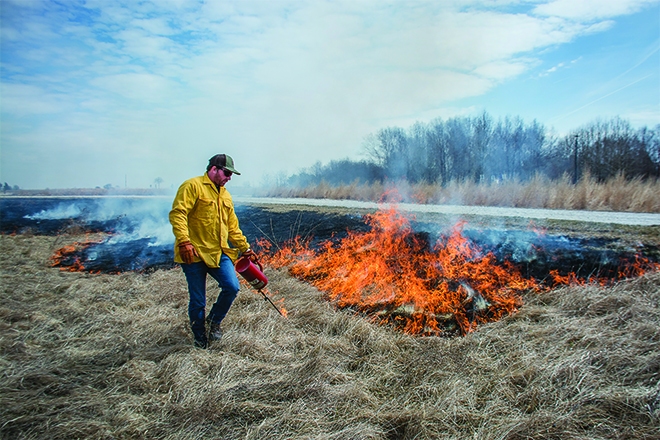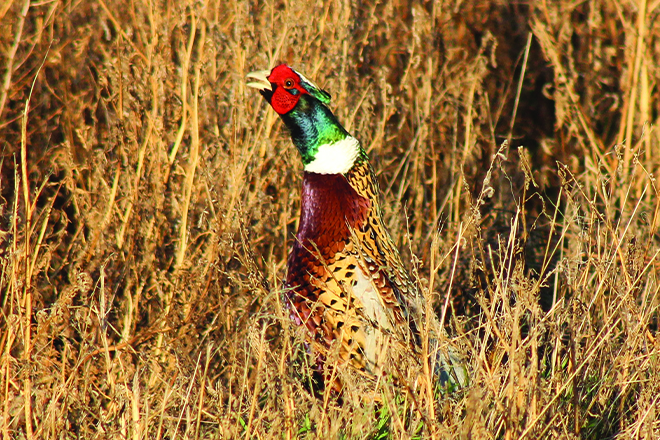Look for the orange and white IHAP signs in Iowa to find public access areas to hunt (above).
IHAP’s orange and white signs are an exciting find for anyone in search of additional areas to pursue our fall passions
Story and Photo by Blake Charboneau, Iowa Farm Bill Biologist
Great strides have been made across the entire pheasant range to rebound bird populations through the restoration of thousands of acres of native, wildlife-friendly habitat. However, many states in the Midwest are greater than 95 percent privately owned, and access to that habitat can still be a challenge. That is what makes Iowa’s Habitat and Access Program (IHAP) especially important to those of us who pursue wildlife-related recreation across the Hawkeye State; IHAP’s orange and white signs are an exciting find for anyone in search of additional areas to pursue our fall passions.
IHAP is an access program administered by the Iowa DNR to increase hunting opportunities for the public on private lands with premium habitat. Participating landowners and private lands staff identify projects that create and/or improve habitat, all in exchange for an agreement providing access to the hunting public. Iowa’s Pheasants Forever staff have partnered with DNR to assist with expanding access acres across Iowa through IHAP. This was how I was able to meet with Mark and Denise Nelson and assist them in learning how IHAP can deliver both habitat and access.
Thankfully, IHAP met their objectives and the Nelsons have recently enrolled two parcels, opening 515 acres to public hunting. These enrollments are a significant benefit to hunters as this is a heavily agriculture-dominated area of the Iowa Driftless with minimal public land hunting opportunities. Both farms are currently in a row crop rotation with habitat being targeted to unprofitable/unsuitable ground with the Conservation Reserve Program (CRP). These properties have a unique combination of pollinator habitat, prairie restorations, filter strips, creeks, a pond, mature hardwood timber and early successional forest. The Nelsons have worked closely with me to plan future habitat projects including regular burning of native grassland habitat, timber stand improvements, improving filter strips, and overall management to maximize the habitat complex’s wildlife potential.
 Above, a prairie management burn keeps the habitat young and healthy. Below, a happy rooster crows his approval.
Above, a prairie management burn keeps the habitat young and healthy. Below, a happy rooster crows his approval.

The IHAP management activities we planned were with pheasants in mind, but a whole array of wildlife species benefits from integrating high-quality habitat into working landscapes. The end vision is for the farms the Nelsons have enrolled to be prime examples of how conservation and agriculture can complement each other.
If you happen to run into Mark or Denise while chasing birds this coming fall, thank them for their contributions to wildlife habitat and public access in Northeast Iowa!
By Blake Charboneau a Iowa Farm Bill Biologist
This story originally appeared in the 2022 Fall Issue of the Pheasants Forever Journal. If you enjoyed it and would like to be the first to read more great upland content like this, become a member today!